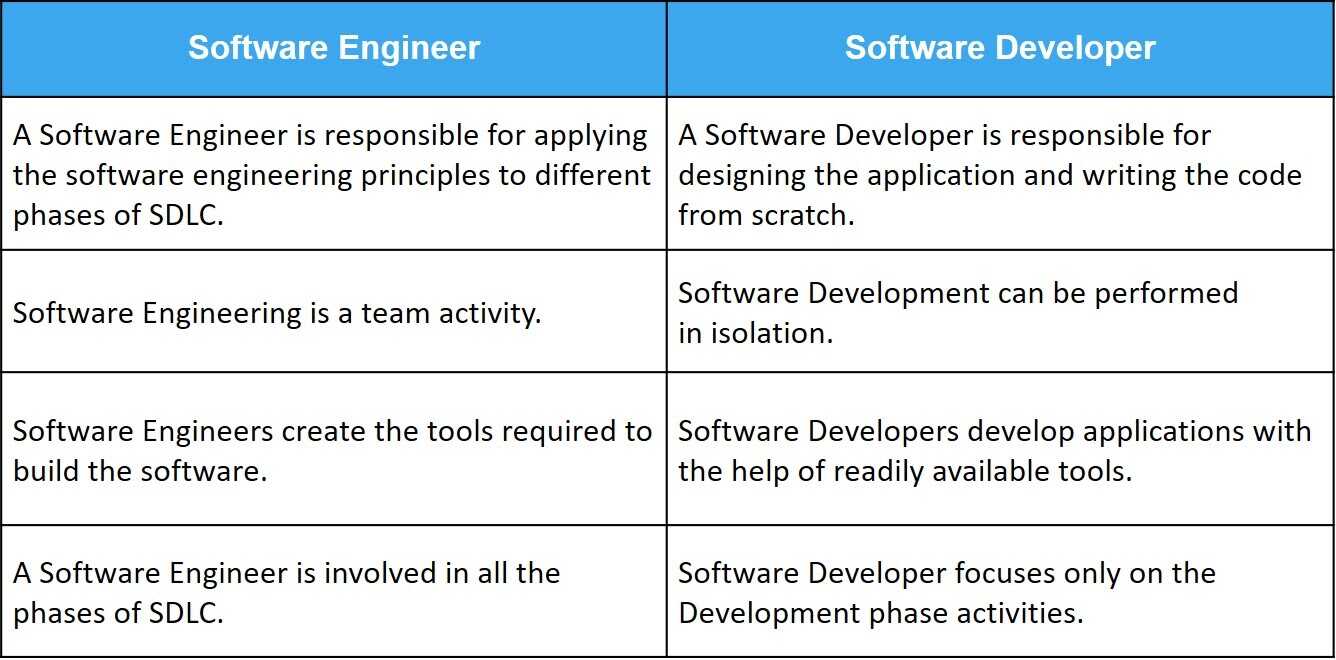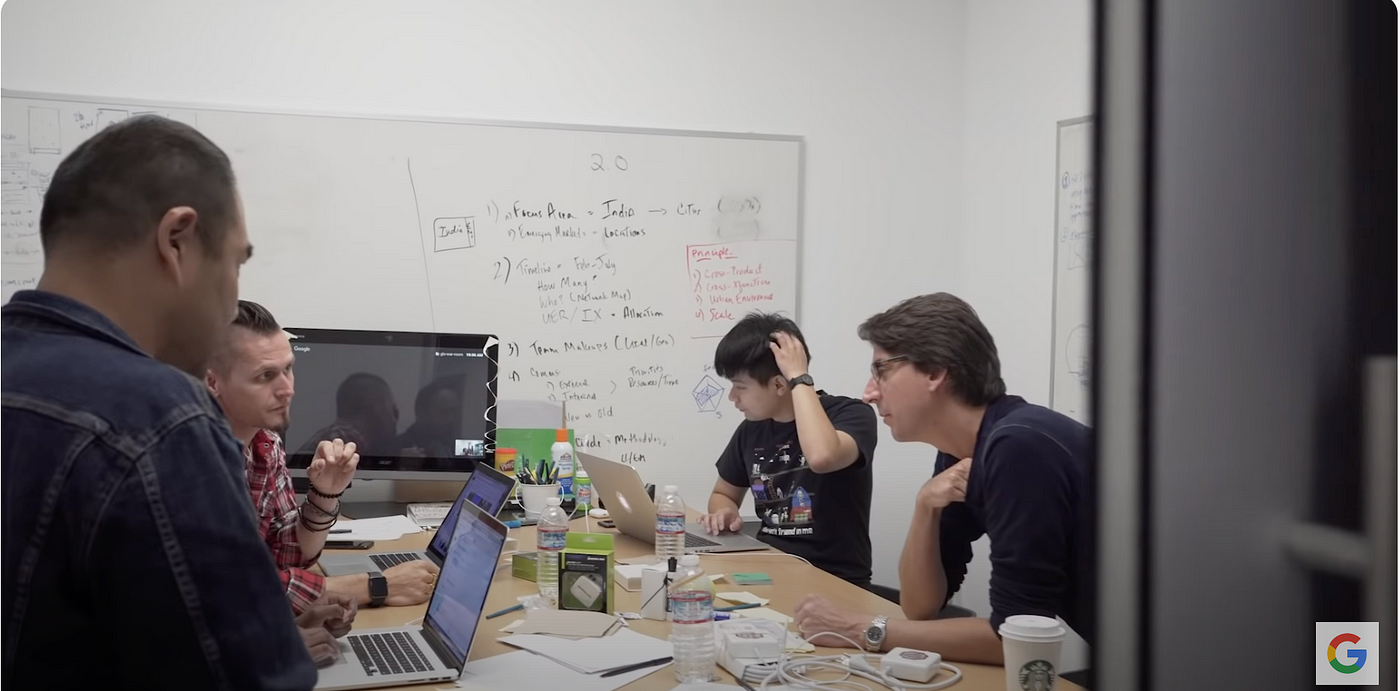All Categories
Featured
Table of Contents

[/image][=video]
[/video]
It is a crucial facet of software design because pests can create a software program system to malfunction, and can lead to poor efficiency or incorrect outcomes. The Usefulness Research in Software Design is a research that analyze whether a recommended software program task is useful or not.

This reduces the possibility of job failing that likewise save money and time. For more information, please refer to the complying with article Types of Usefulness Research Study in Software program Job Advancement short article. An use instance layout is a habits diagram and imagines the observable interactions between actors and the system under advancement.
It does not include performing the code. It always entails executing the code. Confirmation uses techniques like assessments, evaluations, walkthroughs, and Desk-checking, etc.

Validation is to inspect whether the software satisfies the consumer's assumptions and demands. Target is needs spec, application and software application design, high degree, full layout, and database design, etc.
How To Negotiate Your Software Engineer Salary Like A Pro
Verification is done by QA group to guarantee that the software program is based on the requirements in the SRS document. Recognition is performed with the participation of the screening teamIt normally comes initially done prior to recognition. It normally succeeds confirmation. It is low-level exercise. It is a High-Level Exercise.
Tasks linked with a particular phase are accomplished, the phase is total and acts as a standard for next stage. For even more details, please refer to the following short article Cohesion indicates the relative useful capability of the module. Gathering components need to interact much less with various other sections of various other parts of the program to carry out a single task.

Communication is a measurement of the functional strength of a module. A component with high cohesion and reduced combining is functionally independent of various other components. Here, useful self-reliance indicates that a cohesive module performs a single operation or function. The combining implies the total organization between the components. Combining depends on the information delivered with the user interface with the intricacy of the user interface in between the components in which the recommendation to the section or component was created.
It is exceptionally appropriate when both components trade a whole lot of details. The degree of coupling in between 2 components depends on the complexity of the user interface. For even more details, please refer to the following write-up Combining and cohesion. The nimble SDLC model is a mix of iterative and step-by-step procedure versions with a concentrate on process adaptability and consumer fulfillment by fast shipment of functioning software.
Every iteration involves cross-functional groups working simultaneously on numerous areas like preparation, requirements analysis, style, coding, device screening, and acceptance testing. Consumer fulfillment by quick, constant distribution of helpful software application.
How To Prepare For A Software Engineering Whiteboard Interview
High Quality Assurance (QA) Quality Control (QC) It focuses on supplying assurance that the quality requested will certainly be attained. It focuses on meeting the quality asked for.
It constantly consists of the execution of the program. The goal of quality assurance is to prevent issues. The aim of top quality control is to determine and enhance the issues.
It is responsible for the complete software growth life cycle. It is liable for the software testing life cycle. Instance: VerificationExample: Validation The Spiral Model is a version that gives an organized and iterative approach to software growth.
Each loophole of the spiral is called a of the software development procedure. Spiral ModelFollowing are the disadvantages of spiral model: Can be a pricey version to make use of.
Does not work well for smaller projectsFor even more information, please refer to the complying with post Software Engineering Spiral Version. IBM first proposed the Rapid Application Advancement or RAD Model in the 1980s. The RAD design is a kind of incremental process model in which there is a succinct development cycle. The RAD design is utilized when the requirements are totally comprehended and the component-based building method is embraced.
Projects stop working if designers and clients are not committed in a much-shortened amount of time. Troublesome if a system can not be modularizedFor even more details, please refer to the following post Software application Design Rapid Application Growth Version (RAD). Regression testing is defined as a sort of software application testing that is used to verify that recent changes to the program or code have not detrimentally influenced existing functionality.
10 Biggest Myths About Faang Technical Interviews

Makes certain that after the last code changes are completed, the above code is still valid. For even more details, please refer to the following write-up CASE stands for Computer-Aided Software application Design.
It is a software plan that assists with the style and implementation of info systems. It can tape-record a database style and be fairly helpful in making certain design uniformity.
It explains the most effective technique to implement the business tasks of the system. Furthermore, it includes the physical execution of gadgets and data needed for the business procedures. To put it simply, physical DFD contains the implantation-related details such as hardware, individuals, and various other outside parts required to run the organization processes.
2. Dynamic Programming Patterns: This post offers a comprehensive list of dynamic programming patterns, allowing you to take on various sorts of dynamic shows troubles with simplicity. Research these patterns to improve your problem-solving abilities for DP inquiries. 3. Hao Chen's Tree Problems Blog site: This blog site contains a collection of tree-related problems and their services.
: This GitHub repository gives a thorough collection of system design ideas, patterns, and interview questions. Use this source to discover concerning massive system layout and prepare for system style meetings.: This GitHub database, likewise known as "F * cking Formula," provides a collection of high-quality algorithm tutorials and information structure descriptions in English.
one is an interview doc prepared and shared by one of my peers in university and one is a doc I prepared with interview inquiries my university close friends encountered in their own meetings. The second doc is exceptionally resourceful as it gives you a company-wise break down of concerns and likewise some general tips on how to go about answering them.Technical Meeting Preparation: This GitHub repository consists of an extensive listing of resources for technological interview preparation, including information structures, formulas, system layout, and behavior questions.Google Doc with Interview Prep Work Topics: This Google Doc provides a list of subjects to examine for software program engineering meetings, covering information frameworks, formulas, system layout, and other necessary ideas.
The Best Engineering Interview Question I've Ever Gotten – A Real-world Example
: This publication covers a broad range of subjects associated to software engineering meetings, with an emphasis on Java. It's crucial that you comprehend the different phases of your software application engineer interview procedure with Amazon. Here's what you can expect: Return to screening HR recruiter e-mail or call Online assessment Interview loop: 4meetings Initially, employers will look at your resume and examine if your experience matches the open placement.
Table of Contents
Latest Posts
What Are The Most Common Faang Coding Interview Questions?
29 Common Software Engineer Interview Questions (With Expert Answers)
Entry-level Software Engineer Interview Questions (With Sample Responses)
More
Latest Posts
What Are The Most Common Faang Coding Interview Questions?
29 Common Software Engineer Interview Questions (With Expert Answers)
Entry-level Software Engineer Interview Questions (With Sample Responses)